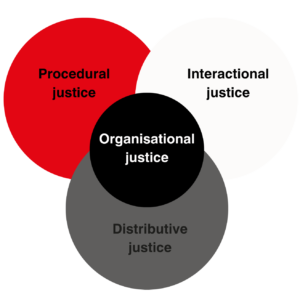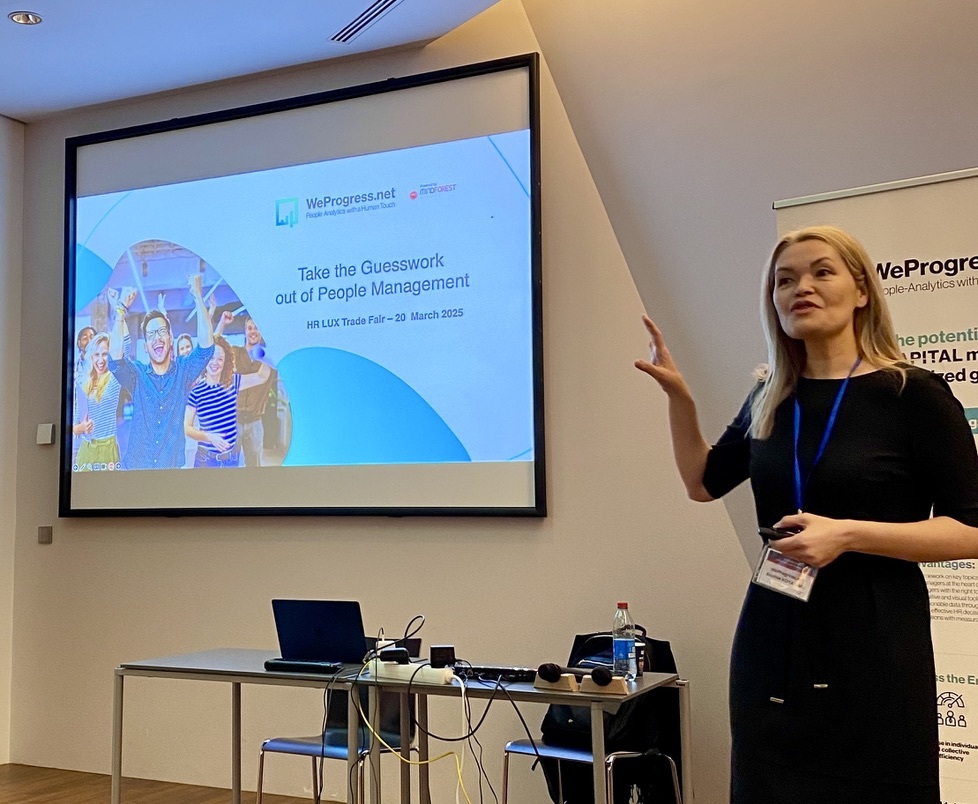The contribution of organisational justice to the introduction of change
Organisational changes require the structures concerned to be able to adapt to external developments by changing internal elements. These changes are not without consequences for the organisations, which often encounter resistance from employees.
Company managers can deal with this by encouraging stakeholders to collaborate and become involved in the change process. The concept of organisational justice includes this notion of collaboration in its principles, which it reinforces with other elements that have a positive impact on the acceptance and appropriation of change.
Why focus on organisational justice?
Every day employees are confronted with decisions that they describe as ‘fair’ or ‘unfair’ based on personal judgements and subjective criteria. It is essential to take their perception of justice into account as it will otherwise lead to the development of attitudes and disruption within the company.
Indeed, a feeling of justice will promote attachment to the company, trust in management, acceptance of decisions, job satisfaction and increase the appearance of positive behaviour, such as mutual aid, courtesy, performance, etc. On the other hand, if a feeling of injustice is perceived by employees, this will have negativeeffects such as low acceptance of changes, higher absenteeism, turnover, and even theft.
This approach clearly demonstrates that the relationship between the company and the employees is based on principles of fairness, mutual respect and mutual benefit for all concerned
What is organisational justice?
These three components lead individuals to perceive situations as fair or unfair based on an evaluation of these situations in comparison with another person who is chosen as a reference by the employee.
In the context of change projects, organisational justice has a facilitating role, since it makes it possible to impact the way in which a change is introduced and thus encourage its acceptance.

Distributive justice or the principle of equity
Distributive justice concerns the evaluation of decisions, results and various resources linked to work (remuneration, pay increase, promotion, etc.). It stems from a principle developed by the behavioural psychologist Adams in 1965, which is the principle of equity. For him, a situation is perceived as fair when the efforts made by the employee to carry out his or her tasks are rewarded by the company to the extent of the investment. A comparison with a colleague reinforces this assessment and perception of distributive justice. If an imbalance in the contribution/retribution ratio is found, the employee will react and adopt a strategy to restore equity. These strategies may be directed against the company and result in a decrease in contribution (reduced performance, more frequent absences, etc.).
However, in practice, this notion of proportionality is not easy to apply. Indeed, managers do not always have all the necessary information to perceive fairness (nature of the contributions and rewards used for comparison, the reference person chosen by the team member).
There are other distributive rules that seem more appropriate in some cases for the company. For example, the principle of equality, which provides for the distribution of the same share of resources to everyone. Another rule is the individual needs rule, which states that resources should be distributed according to the needs of each individual (e.g. the allocation of days off).
Procedural justice, a type of justice that hears the voice of the employee
This concerns the decision-making procedures applied by a manager with regard to the work of his/her employees. It would seem that the more employees are taken into consideration in the decision-making process, the fairer the decision taken appears to be. Through this practice, the manager promotes the feeling of fairness felt by the employee because they feel listened to and that their opinion is taken into consideration.
However, to ensure that a perception of procedural justice is promoted, the manager must respect certain criteria:
- Consistency of application (identical application to different people and over time)
- Removal of bias (clear procedures not based on prejudice)
- Accuracy of information (procedures based on obtaining accurate information)
- Representativeness (taking into account criteria that are relevant to employees)
- Ethical (decision in line with the company’s ethics).
In the case of competency assessments, for example, these criteria can be used to promote acceptance. By giving employees a voice, they can express themselves concerning what they think is relevant for the competence assessment. Failure to comply with the above-mentioned criteria can have negative effects on the relationship between the employer and the employees: reduced trust in management, increased absenteeism, the emergence of disputes.
Interactional justice, between social sensitivity and transparency
Employees are sensitive to the quality of interpersonal treatment by decision-makers. This means that they attach importance to the treatment they receive from those in charge, and thus determine whether they are treated fairly by the company. Two dimensions are taken into account for this: social sensitivity and information about the decision. The first dimension reflects the importance of communicating decisions with respect and dignity. The second dimension concerns the information given about the decision taken, which helps to justify how and why it was taken. These two dimensions increase the perception of justice and acceptance of the decision.
Leaders and managers therefore need to communicate transparently and explain precisely how a situation unfolds in order to ensure that their team and their company function well.
These three components of organisational justice are not context-specific and can be applied in all types of organisations. The question remains: what are its applications in a change management context?
Applying organisational justice to change management
In the context of any change project, uncertainties may arise and lead to resistance, this can be mitigated thanks to the implementation of changes that are perceived as fair.
Indeed, one study showed how using the theory of organisational justice contributed to the implementation of internal rules for an entire organisation that was developing and growing in size. Firstly, employees were involved in the development of these rules and procedures through a questionnaire in which they were asked to indicate which points should be added, which they found most difficult to accept and which needed to be explained. The analysis of the responses then allowed the initial regulation to be modified, clarifying the grey areas and highlighting the elements that could not be modified due to the legal context in force. Once the analysis was completed, the employees were given feedback during meetings and through written material containing all this information. Subsequently, a satisfaction questionnaire on the perceived sense of justice in relation to this procedure was sent out to the whole company and resulted in positive feedback.
Understand the mechanisms of perception to make the change accepted
Involving all employees in a change project is not easy. However, it is possible to explain and inform employees about a change via a variety of means and thus influence their reaction and acceptance of decisions.
Employees attach great importance to the fairness of decisions and the way they are implemented by the manager, especially when their own interests are at stake. This is an important motivating or de-motivating factor and affects their behaviour and investment in the company. This mechanism of perception of organisational justice is even more marked during change projects where uncertainty is strongly present. Thus, the application of low-resource principles such as encouraging employee participation, giving them the opportunity to take part in an aspect of the decision, using the same procedures for all employees or communicating changes by providing adequate information reduces this feeling of uncertainty.
Expert in Organisational Transformation @ MindForest Group
Vanessa Castrogiovanni
WANT TO RECEIVE OUR LATEST THOUGHT LEADERSHIP CONTENT?
Related posts
 Take the Guesswork out of People Management
Take the Guesswork out of People Management
 From processes to people: achieving quality
From processes to people: achieving quality
 Daring to lead Positive Transformation: What if Positive Emotional Capital was your key to sustainable change?
Daring to lead Positive Transformation: What if Positive Emotional Capital was your key to sustainable change?
 Why hire Change management professionals? We can do it alone!
Why hire Change management professionals? We can do it alone!
 Digital Transformation and Change Management: Lessons shared in an event hosted by Cebi and MindForest
Digital Transformation and Change Management: Lessons shared in an event hosted by Cebi and MindForest



